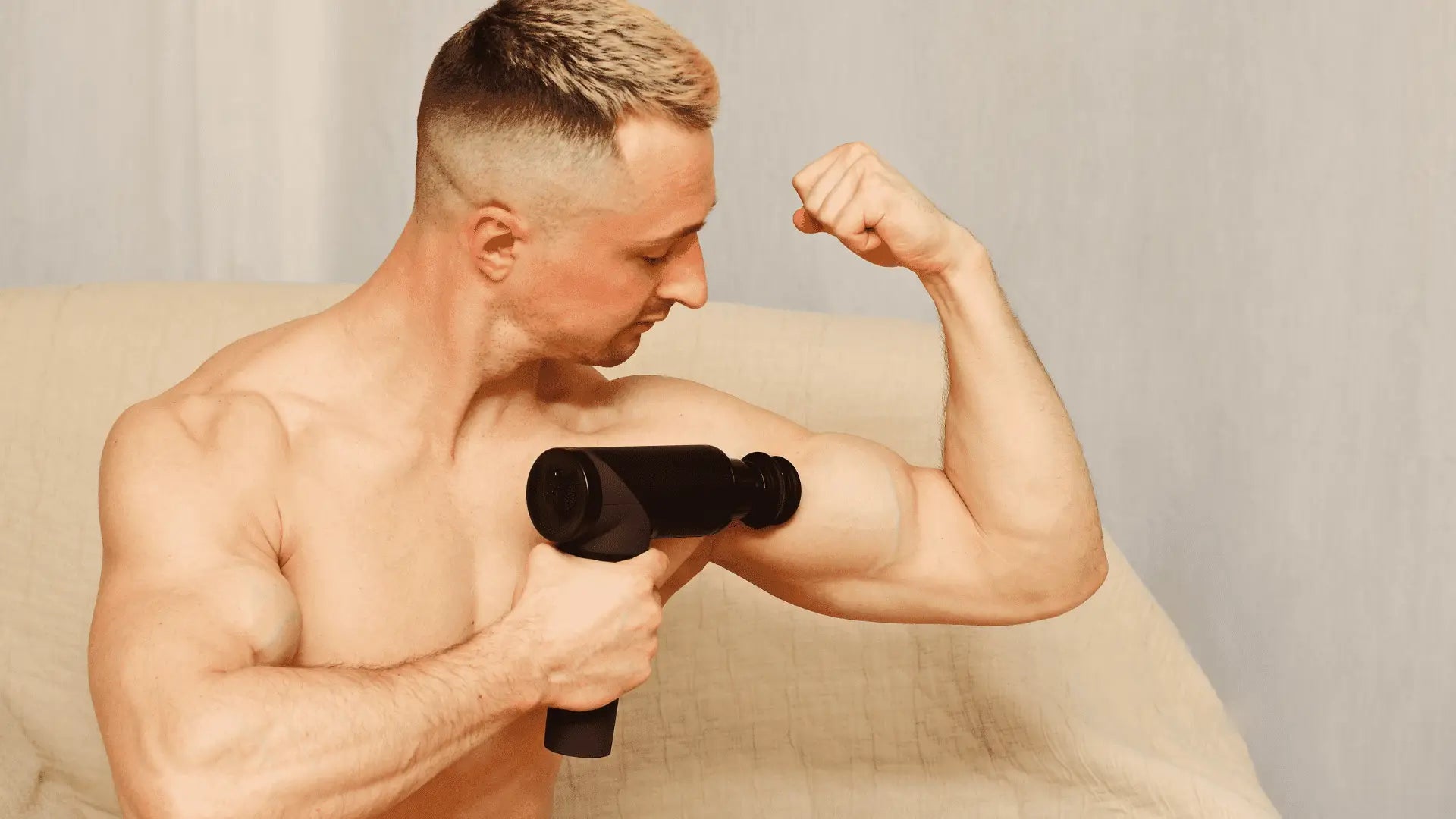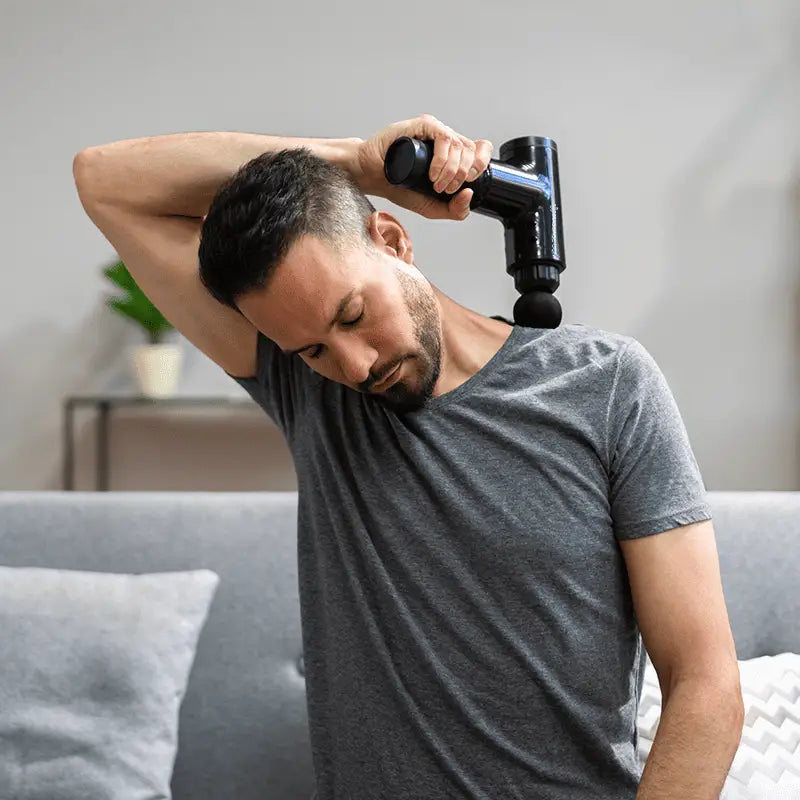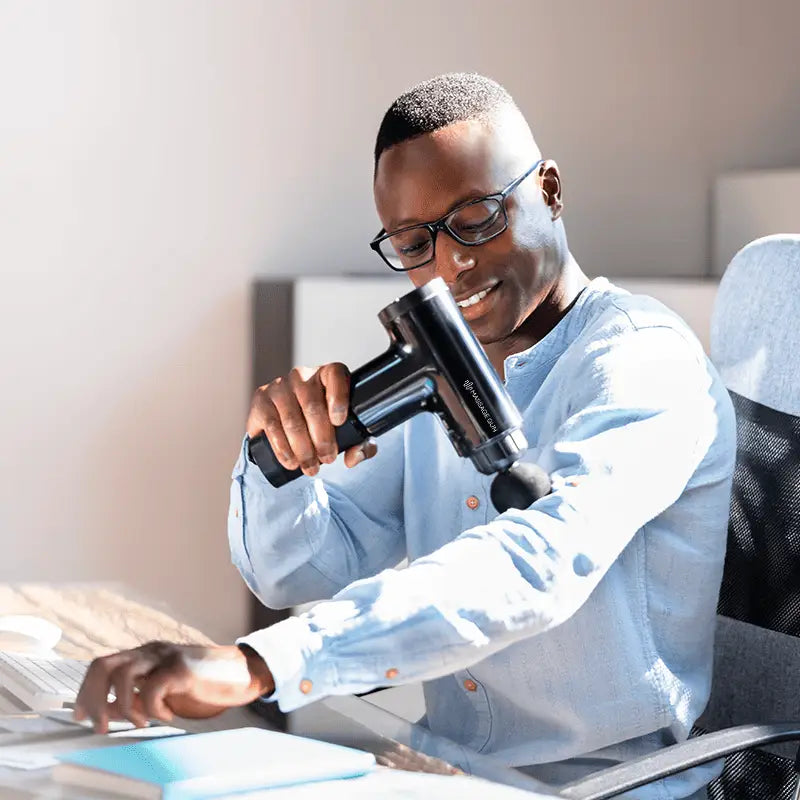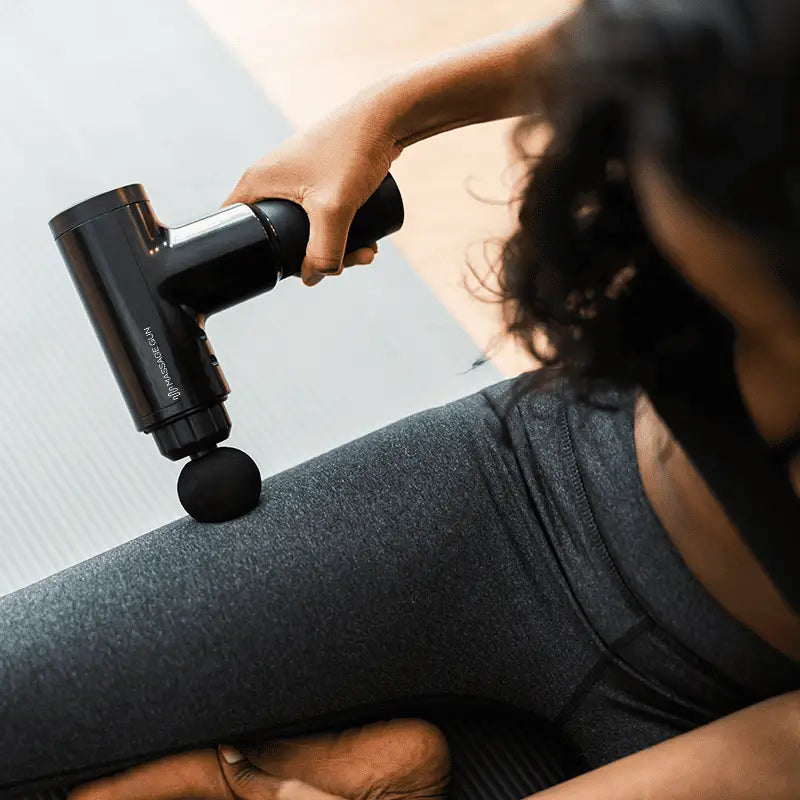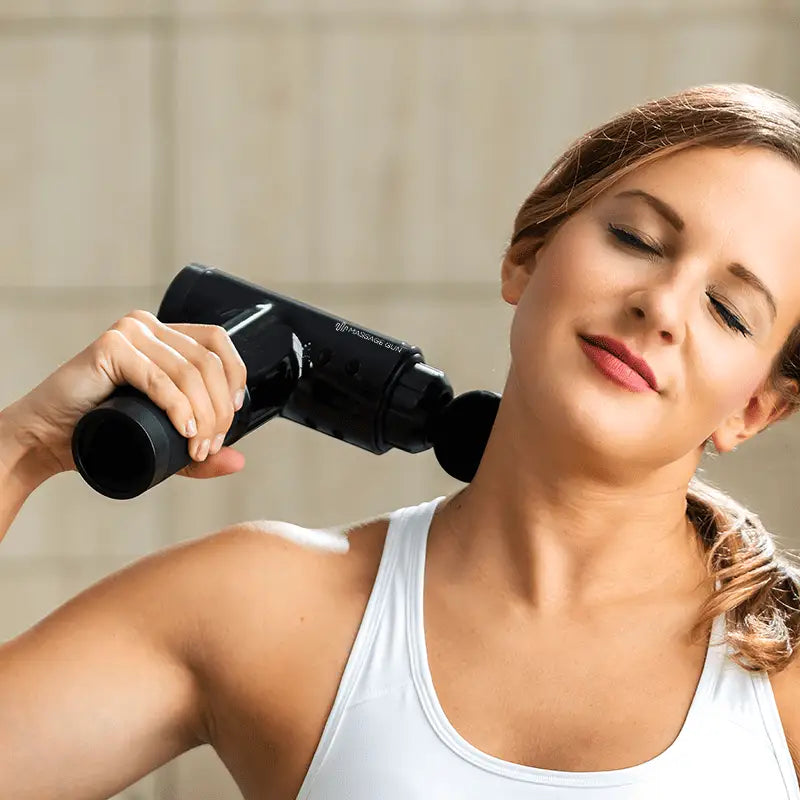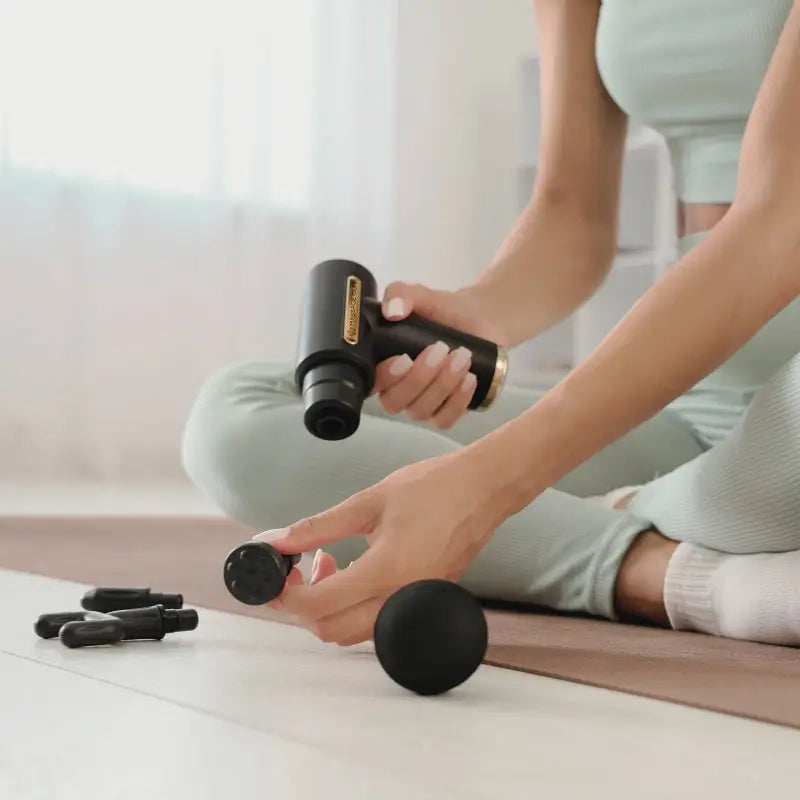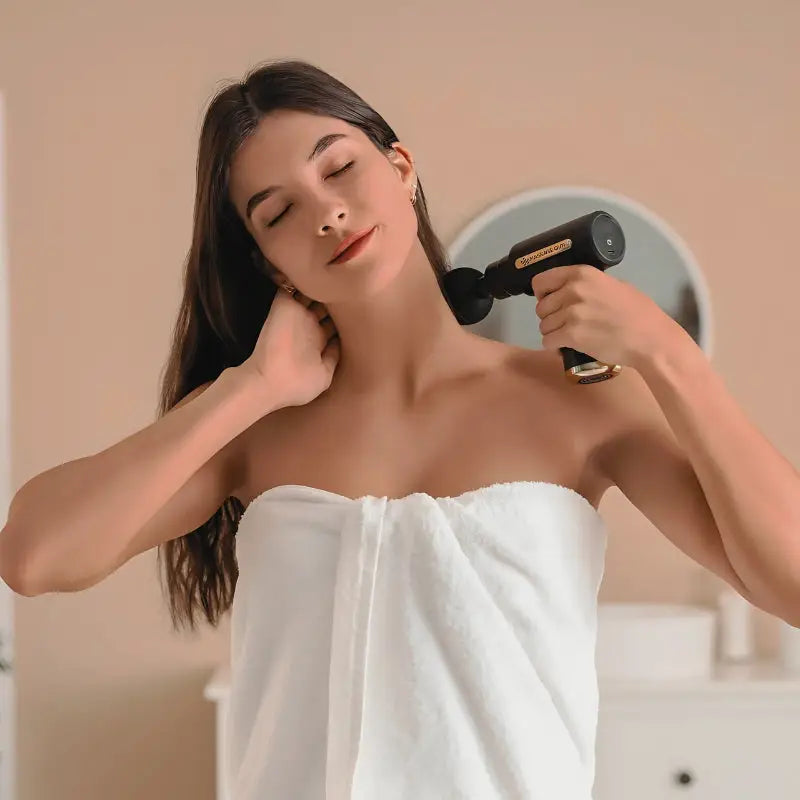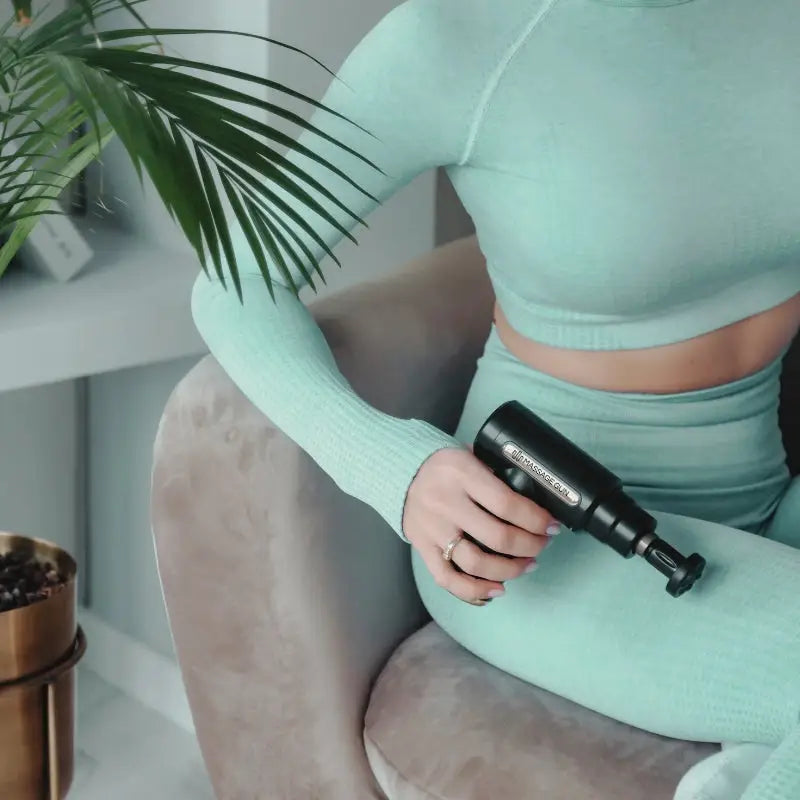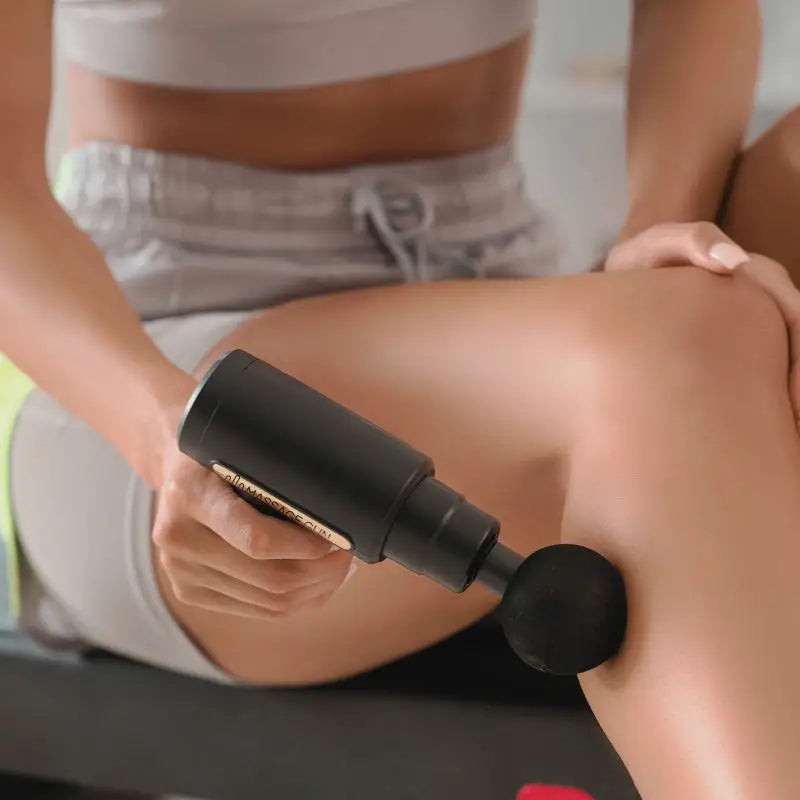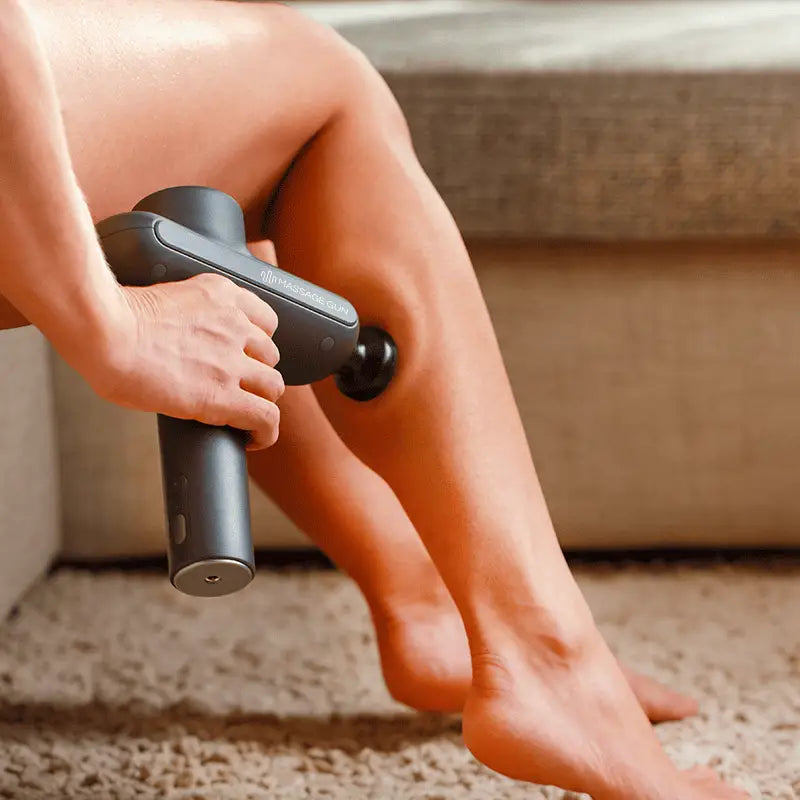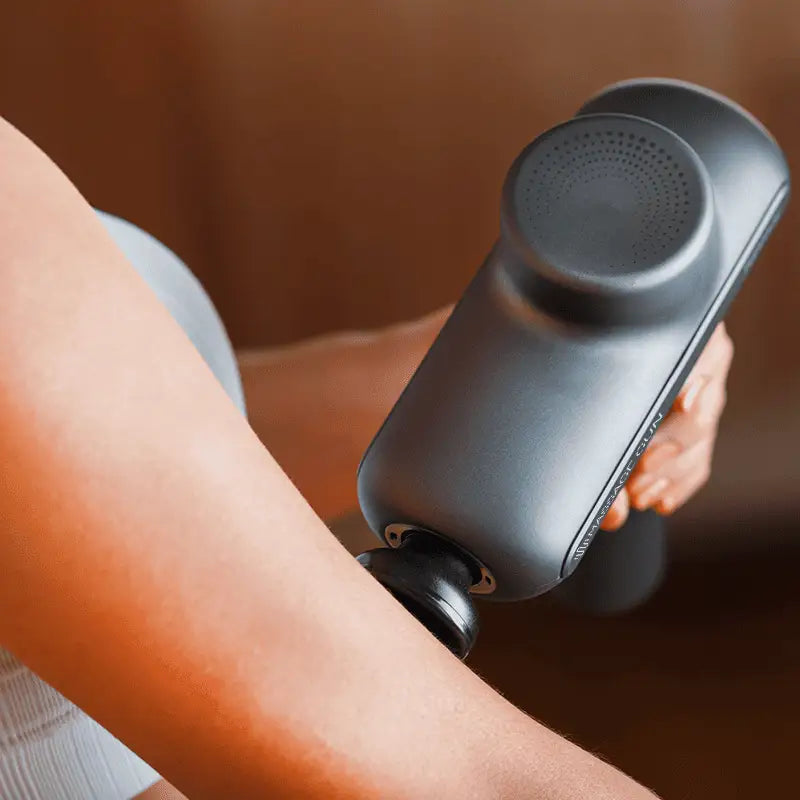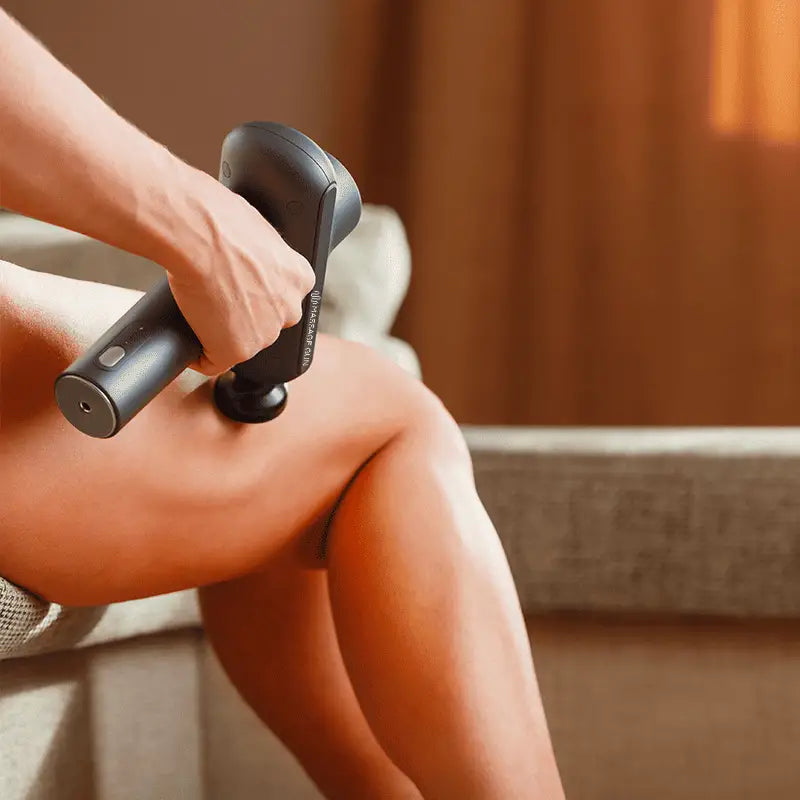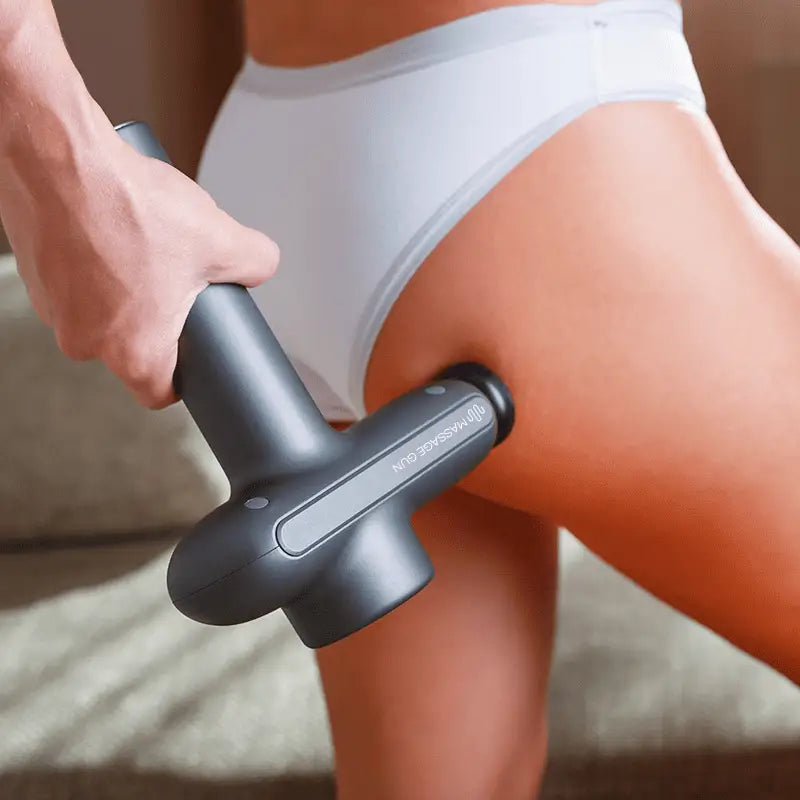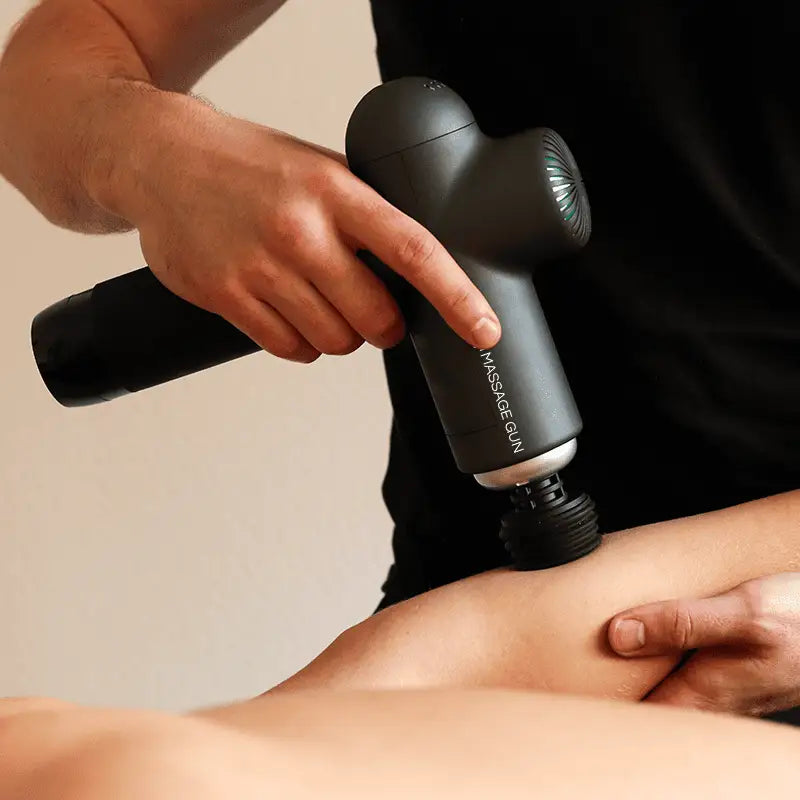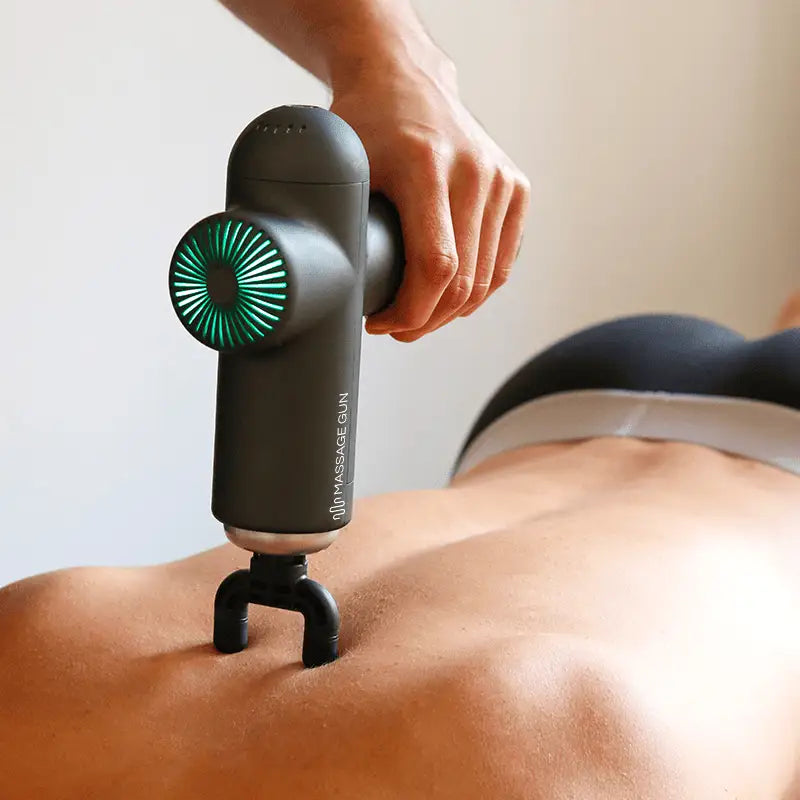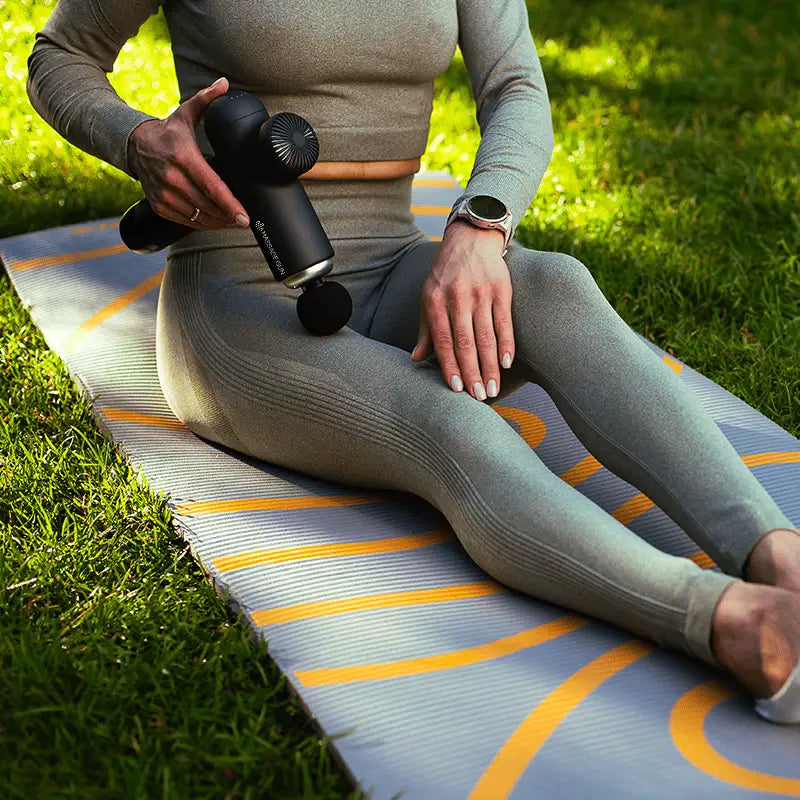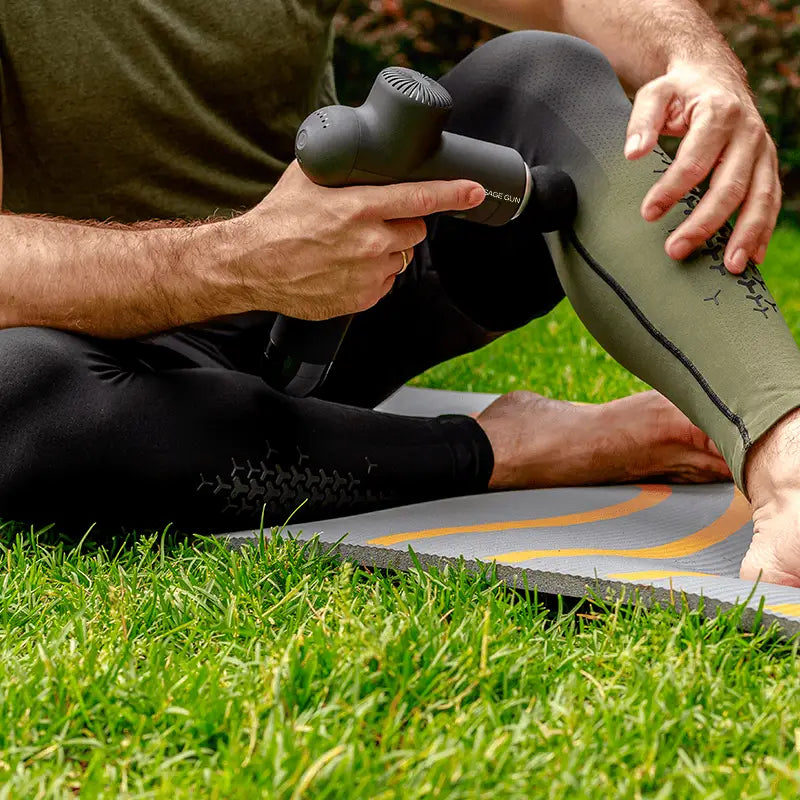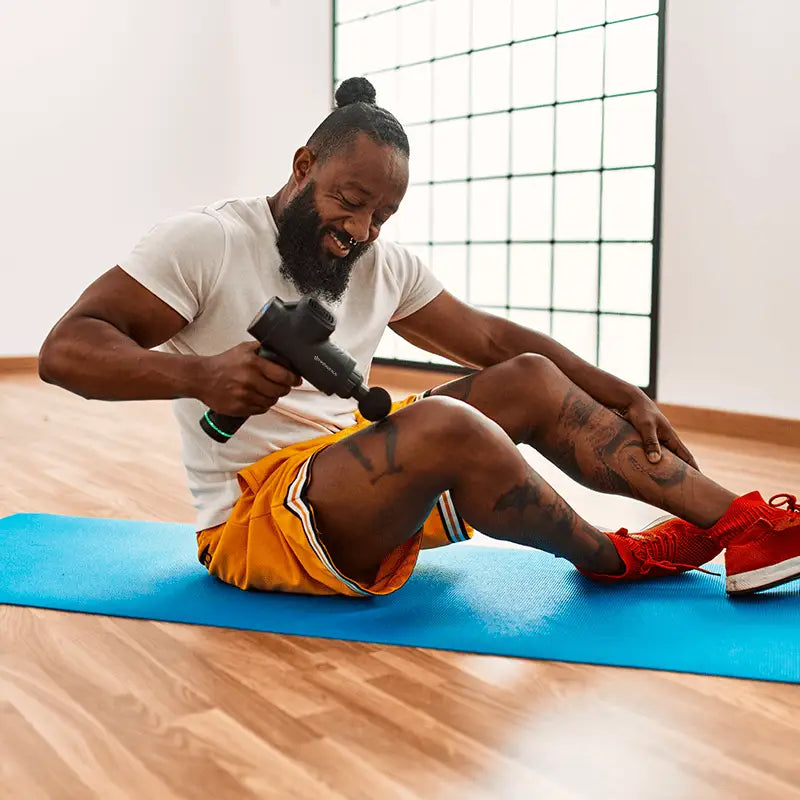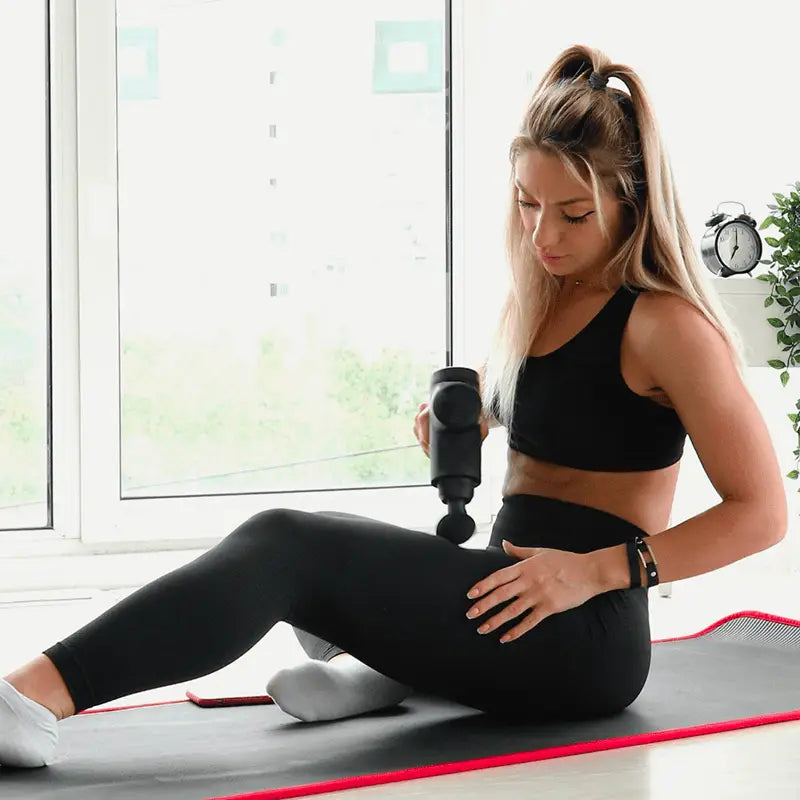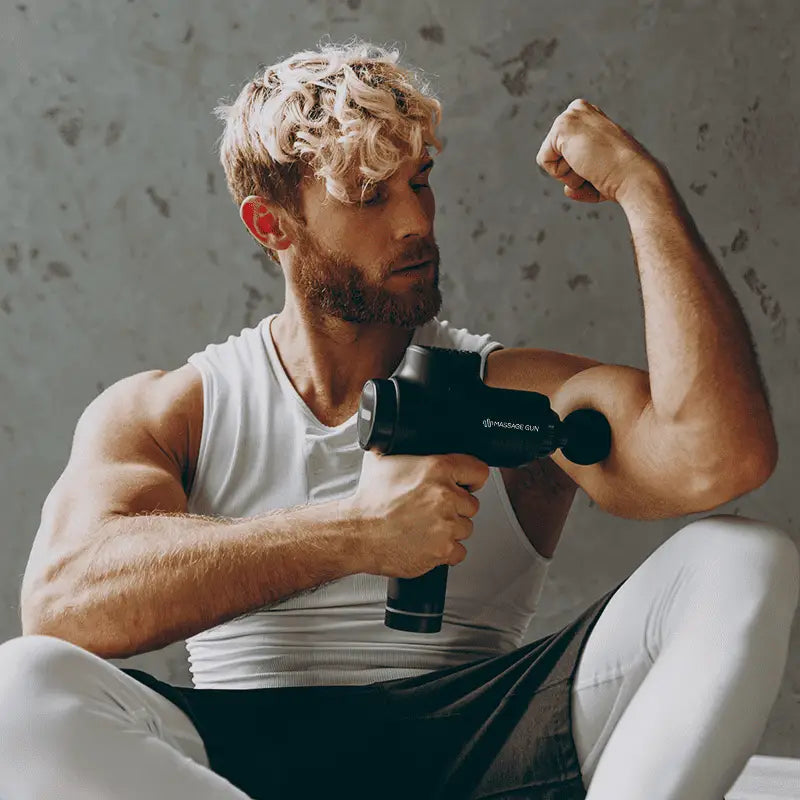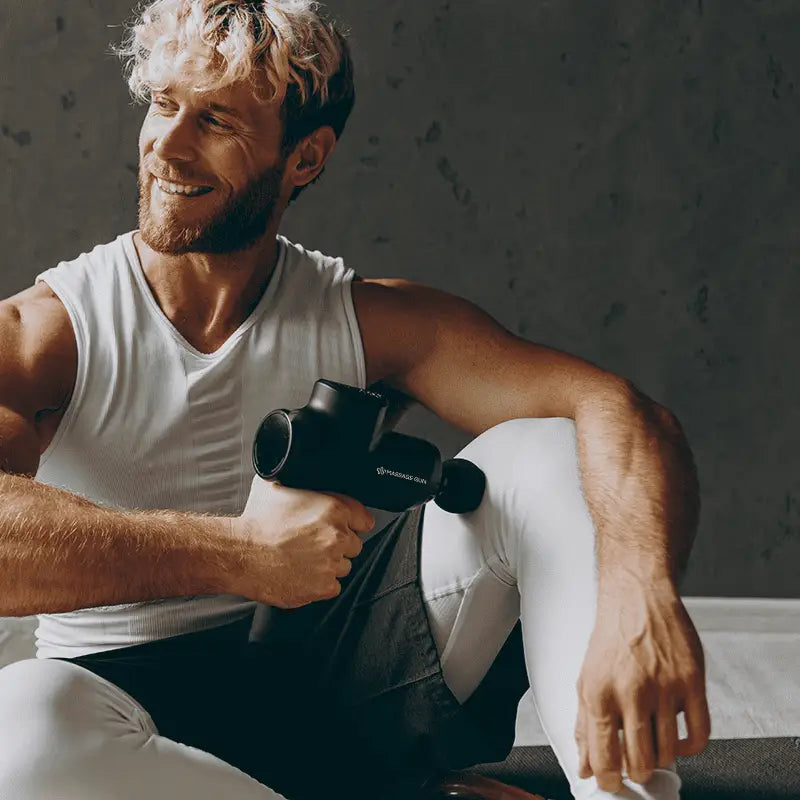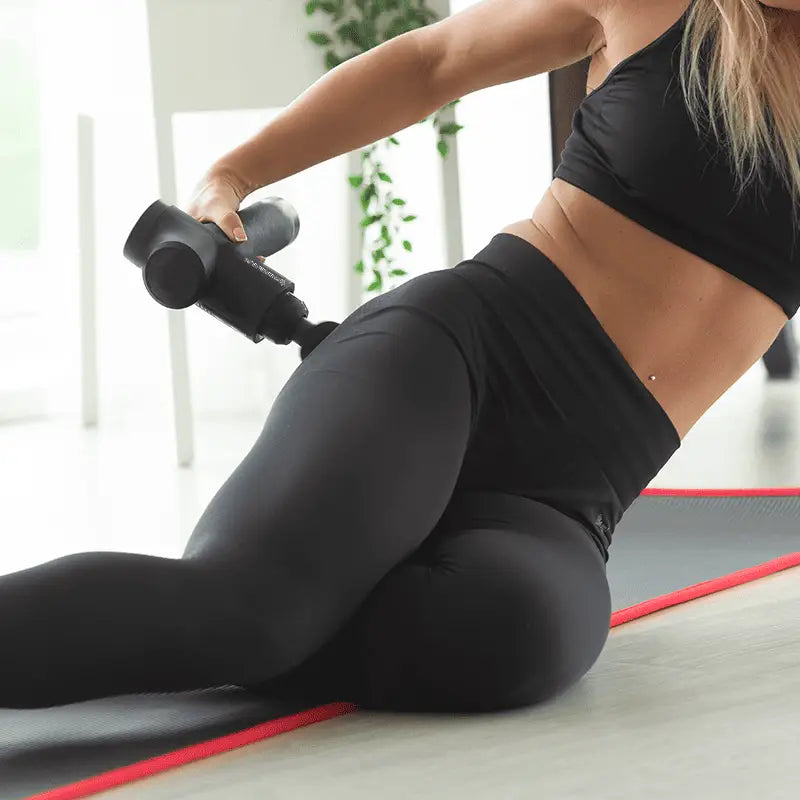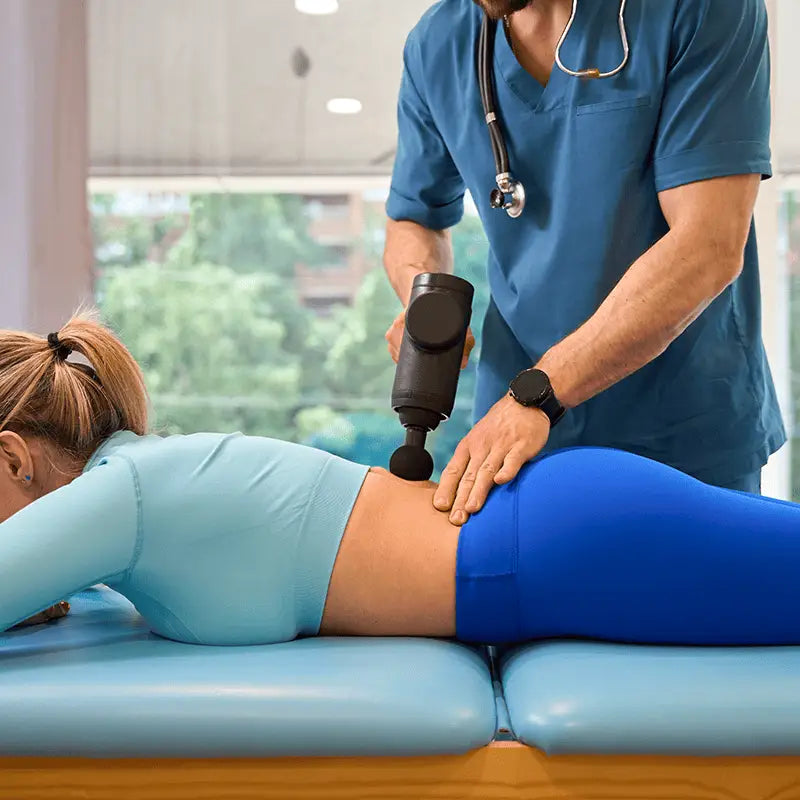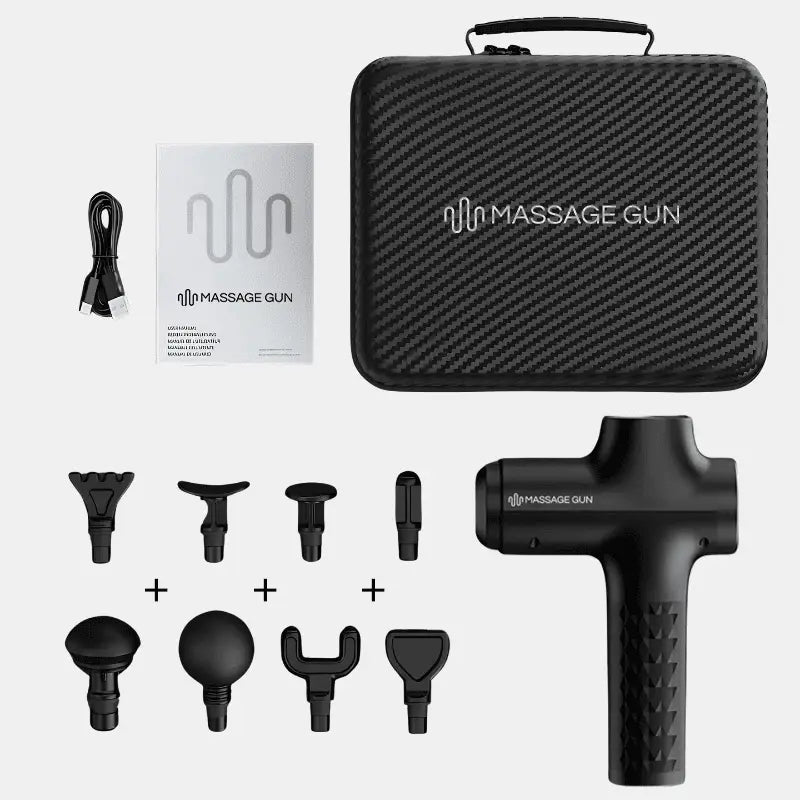Massage guns have gained popularity for physical recovery, especially after intense workouts. These devices use percussion therapy to deliver targeted pressure to muscles, helping to reduce muscle stiffness, improve blood flow, and alleviate soreness.
Massage guns can help promote recovery by stimulating fluid movement in the muscles and reducing stress on the body. But are they as effective as they seem? This article dives into how they work, the benefits, and potential risks, based on the latest research and expert insights.
How do massage guns work on sore muscles?
Massage guns operate using percussion therapy, a method that involves rapid bursts of pressure applied to muscle fibers. These pulses help relieve tension, break down fascia, and reduce lactic acid buildup that typically causes muscle soreness. By improving fluid circulation and stimulating blood flow, massage guns can promote whole body recovery after physical exertion.
The effect of vibration therapy also targets tight muscle fibers, helping to decrease onset soreness, improve movement, and reduce overall discomfort. Many people feel immediate relief when using a handheld massager, especially on common problem areas like the lower back, shoulders, and legs.
The benefits of using a massage gun for sore muscles
Massage guns provide multiple benefits, especially after a post workout session. The primary benefits include:
- Decreasing muscle pain and tension: The deep percussion massage helps release tightness and improve blood flow.
- Reducing delayed onset muscle soreness: Massage guns break down scar tissue and reduce the buildup of lactic acid, leading to faster recovery.
- Improving flexibility and range of motion: Regular use of a massage gun before or after exercise helps prevent stiffness and boost recovery.
How massage guns can promote lymphatic drainage?
Massage guns also stimulate the lymphatic system, helping to reduce swelling and promote faster healing. This percussion therapy may aid in reducing inflammation by encouraging the body’s natural detoxification processes. By improving blood flow and fluid movement, they support muscle recovery more efficiently than some other recovery tools.
Are massage guns better than foam rollers?
Massage guns and foam rollers are both effective recovery tools, but they work in different ways. Massage guns can help target specific areas, such as the lower back or shoulders, with deep pressure, whereas foam rollers are better for broad, general muscle recovery. While both methods promote pain relief, massage guns offer a more convenient way to target tight spots and reduce muscle stiffness.
One major difference between these tools is the depth of treatment. Massage guns provide a high level of percussion pressure that can penetrate deeper into muscle fibers, while foam rollers require physical effort and positioning to provide relief. Foam rollers are best suited for larger muscle groups, while massage guns offer greater precision and support for specific areas.
How to use a massage gun for sore muscles?
To properly use a massage gun for sore muscles, follow these steps:
- Before using a massage gun, make sure your muscles are warmed up. Use the device before or after a workout to reduce muscle soreness.
- Start with a low setting, and gradually increase the intensity based on how your body feels.
- Use the massage gun for 1-2 minutes on each muscle group, avoiding sensitive areas like the head and joints.
- Apply the gun in short bursts to avoid overstimulation, which can cause serious injuries if used incorrectly.
Massage gun settings and duration
It’s important to adjust the speed settings based on your comfort level. Use a lower intensity for more sensitive areas and a higher setting for larger muscle groups, such as the legs or shoulders. Avoid applying excessive pressure, as this could aggravate muscle discomfort or lead to bruising.
When not to use a massage gun?
Although massage guns can help with sore muscles, there are times when they should be avoided. Do not use a massage gun on areas that are injured, such as sprains, fractures, or inflamed muscles. Overusing the device on injured muscles can increase discomfort and delay recovery.
Additionally, individuals with certain conditions, such as nerve damage or bone issues like osteoporosis, should consult a physical therapist or doctor before using a massage gun. It's also best to avoid using it on sensitive areas, such as the head, where percussion therapy might cause harm.
The potential risks of using a massage gun
While massage gun therapy offers many benefits, improper use may result in injury. Applying too much pressure or using the gun for too long can overstimulate muscles and cause bruising. It’s essential to make sure you follow recommended guidelines and pay attention to how your body reacts. If you experience sharp pain or unusual discomfort, stop using the device immediately and consult a physical therapist.
What massage guns can’t do?
Massage guns are not suitable for treating all muscle conditions. While they are great for reducing muscle stiffness and improving range of motion, they are not a substitute for proper physical therapy or medical treatments for conditions like arthritis, low back pain, or nerve injuries. For long-term relief, it’s best to integrate massage gun therapy with other recovery methods, such as stretching, hydration, and rest.
Conclusion: Is a massage gun right for you?
Massage guns are a great tool for those looking to alleviate muscle pain and promote whole body recovery. They are particularly effective for reducing delayed onset muscle soreness (DOMS), improving flexibility, and boosting recovery after workouts. However, like any recovery device, they must be used with care and according to proper guidelines to avoid injury.
If you frequently experience tight muscles or discomfort after exercise, a massage gun may be an excellent addition to your fitness routine. Just be sure to consult with a healthcare professional if you have any pre-existing conditions. With the right approach, a massage gun can help you reduce muscle tension and promote overall wellness.
Frequently asked questions
1. Does a massage gun really help with sore muscles?
Yes, massage guns can provide relief for sore muscles by using percussive massage to deliver rapid pulses to the muscle fibers. This stimulates circulation and fascia release, reducing stress and promoting recovery. Many athletes and those who regularly work out benefit from this type of therapy, as it helps break down lactic acid and improves mobility. According to an international journal on mechanotherapy, massage guns are effective in treating soreness and increasing blood flow to the muscles, which aids in recovery.
2. How does a massage gun relieve muscle soreness?
Massage guns operate using percussive massage, which deeply penetrates the muscle tissue, releasing fascia and improving circulation. This increased blood flow aids in the delivery of oxygen and nutrients, which helps relieve muscle soreness. The effect of percussive therapy also reduces the buildup of lactic acid, a common cause of soreness after exercise. By working through the muscle fibers, a massage gun promotes faster recovery and helps improve flexibility and strength.
3. When should you use a massage gun for sore muscles?
The best time to use a massage gun is both before and after a workout. Before using a massage gun, apply gentle pressure to stimulate circulation and warm up the muscles. This can help prevent injuries during exercise. During recovery, use the gun to reduce soreness and promote fascia release, ensuring better mobility and muscle function. It's important to follow a proper recovery routine, alternating between different muscle groups and not focusing too much on any large muscle group for more than 1-2 minutes.
4. Are massage guns safe to use on sore muscles?
Massage guns are generally safe to use on sore muscles when applied correctly. However, you should not overuse them or apply too much pressure, as this can lead to deep tissue damage or bruising. Athletes or individuals who experience regular muscle soreness after physical activity find massage guns to be very good tools for recovery, but it’s important to remember that they are just one part of an overall recovery plan. Always consider consulting a health professional if you have limited mobility or pre-existing injuries.
5. Can a massage gun help with lower back pain?
Yes, massage guns can provide relief for leg pain and lower back pain by targeting deep tissue in these areas. They work by improving circulation and reducing tightness in the muscles. However, you should be cautious when using a massage gun on sensitive areas like the lower back, as too much pressure may cause discomfort or injury. It’s a good idea to consult a rehabilitation specialist or physical therapist before using a massage gun in these cases.
6. How long does it take for a massage gun to relieve sore muscles?
A massage gun typically takes about 1-2 minutes per muscle group to start relieving soreness. However, the full effects, such as reduced soreness and increased range of motion, may take several hours or even a day to fully set in. By applying the gun consistently after workouts, you can enhance muscle recovery through improved blood flow and release of lactic acid. Over time, you will notice better mobility and reduced stress on your muscles during your recovery phase.
7. What are the risks of using a massage gun on sore muscles?
While percussive massage is generally safe, improper use can lead to muscle damage or injury, especially if too much pressure is applied for extended periods. Using the gun for more than the recommended time can cause deep tissue bruising or overstimulation. In case of pre-existing conditions like limited mobility, deep tissue injuries, or joint issues, consult a health professional to ensure it fits into your recovery routine without causing harm.
8. How does a massage gun compare to foam rolling for muscle soreness?
Both foam rolling and percussive massage are effective methods for reducing soreness and increasing range of motion, but they differ in their application. Foam rolling targets large muscle groups, while massage guns can provide deep, targeted pressure to specific areas. The effect of a massage gun is often faster and more intense, making it a better option for athletes who need quick recovery after workouts. Foam rollers are more appropriate for general muscle maintenance, while massage guns can also help with targeted rehabilitation.
9. Can a massage gun help reduce delayed onset muscle soreness (DOMS)?
Yes, massage guns can help reduce delayed onset muscle soreness (DOMS) by increasing circulation and breaking down lactic acid buildup. Percussive massage penetrates the muscle fibers, reducing tightness and helping muscles recover faster after exercise. Regular use of a massage gun will not only relieve soreness but also improve muscle mobility and strength, preventing future injuries.
10. Should you use a massage gun on sore muscles every day?
Using a massage gun every day can be beneficial for muscle recovery, but it's essential to avoid overuse. Applying the gun to the same muscle group too frequently may cause irritation or muscle damage. It's best to alternate between muscle groups and use the massage gun as part of a comprehensive recovery system, including stretching, hydration, and rest. Always make sure to give your muscles time to recover between sessions, and if you feel soreness after regular use, consult a massage therapist or physical therapist for advice.


